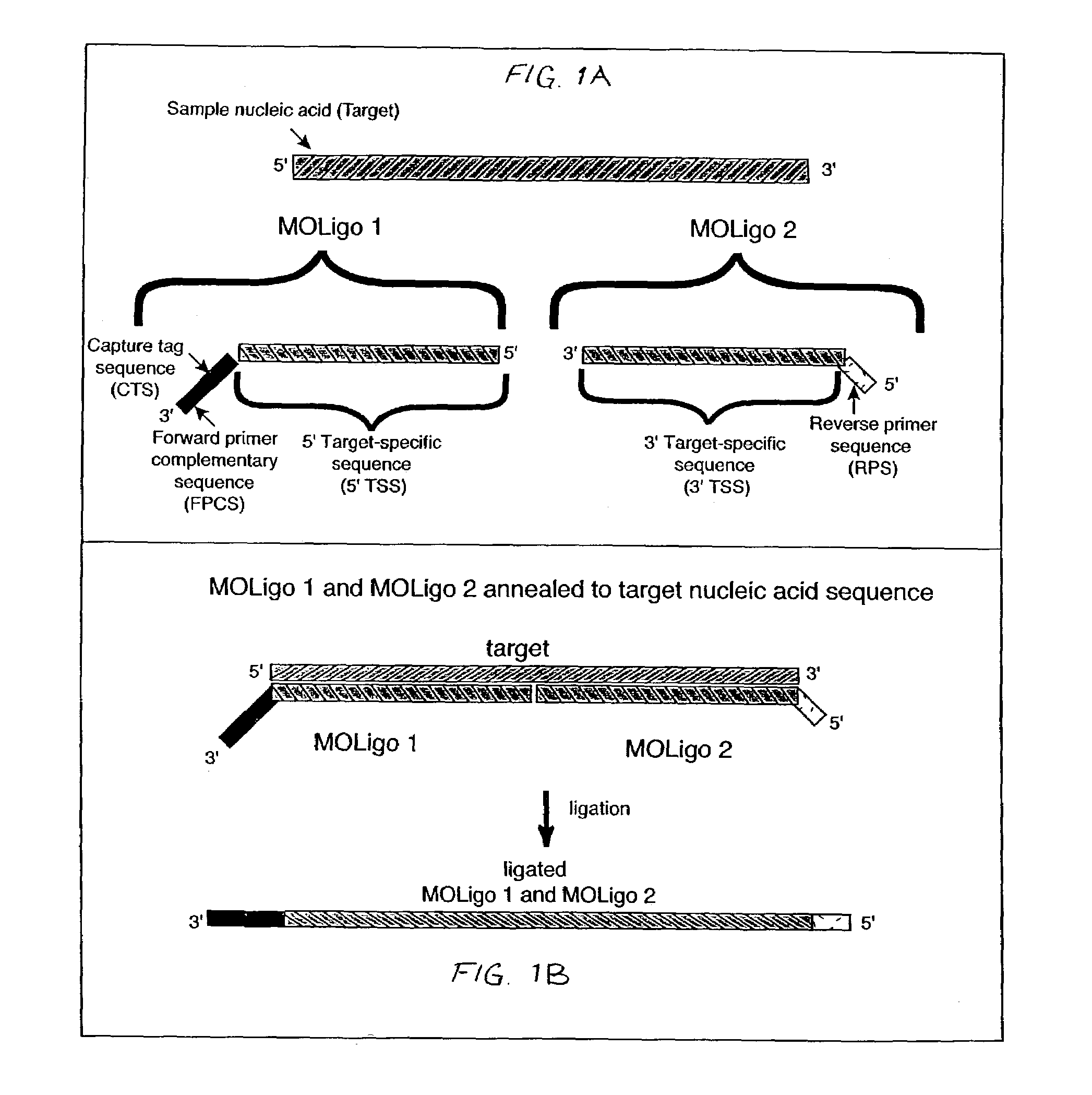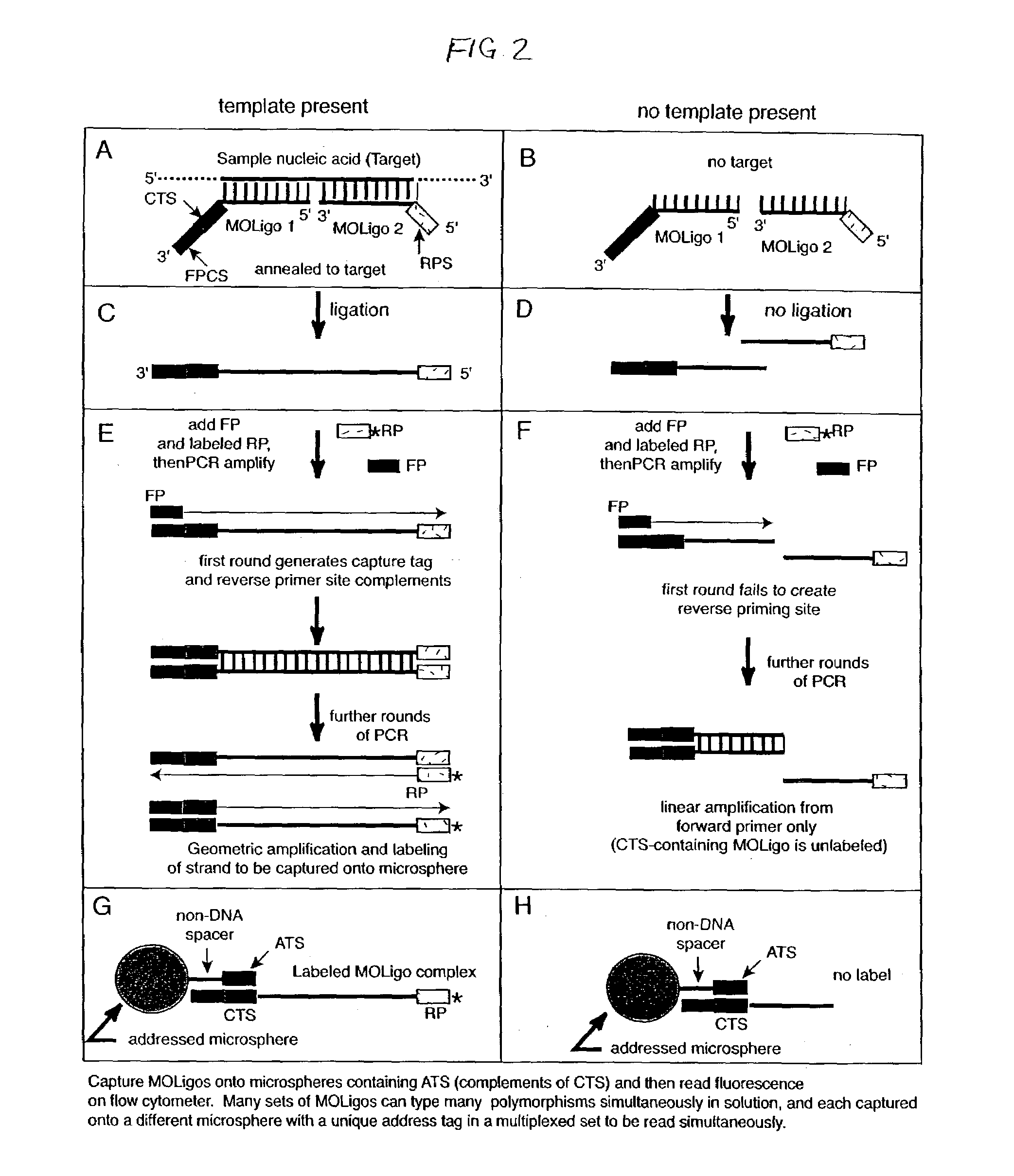Nucleic acid sequence detection using multiplexed oligonucleotide PCR
a technology of oligonucleotide and nucleic acid, which is applied in the field of nucleic acid sequence detection using multiplexed oligonucleotide pcr, can solve the problems of inability to screen a large number of sites in a large number of individuals, and inability to meet large-scale dna analysis requirements. , to achieve the effect of redundancy in all
- Summary
- Abstract
- Description
- Claims
- Application Information
AI Technical Summary
Benefits of technology
Problems solved by technology
Method used
Image
Examples
Embodiment Construction
[0036]In accordance with the present invention, multiplexed oligo-ligation PCR (“MOL-PCR” herein) is accomplished by using a combination of an oligonucleotide (“oligo”) ligation step, followed by multiplexed PCR amplification of all ligated oligos simultaneously. The PCR amplification is performed on the ligated oligos from all of the target nucleic acid sites at the end of the process rather than amplifying individual target sequences. Consequently only a small amount of target nucleic acid is needed and the time required assay is greatly reduced. Oligonucleotides may include complementary target sequences, PCR primer sequences, and capture tag sequences; a ligase; microspheres; and flow cytometry to determine nucleotide base composition at specific sites in a nucleic acid strand.
[0037]The multiplexed PCR step is accomplished by incorporating “tails” into the ligation oligos that serve as common priming sites for all ligation products. The use of a single primer pair for the PCR am...
PUM
| Property | Measurement | Unit |
|---|---|---|
| composition | aaaaa | aaaaa |
| fluorescence | aaaaa | aaaaa |
| fluorescent | aaaaa | aaaaa |
Abstract
Description
Claims
Application Information
 Login to View More
Login to View More - R&D
- Intellectual Property
- Life Sciences
- Materials
- Tech Scout
- Unparalleled Data Quality
- Higher Quality Content
- 60% Fewer Hallucinations
Browse by: Latest US Patents, China's latest patents, Technical Efficacy Thesaurus, Application Domain, Technology Topic, Popular Technical Reports.
© 2025 PatSnap. All rights reserved.Legal|Privacy policy|Modern Slavery Act Transparency Statement|Sitemap|About US| Contact US: help@patsnap.com



